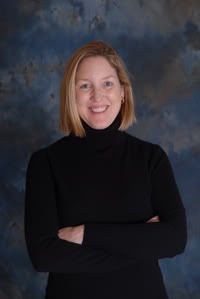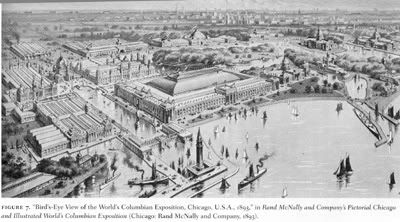Blog Tour: A Parisienne in Chicago by Madame Leon Grandin, translated by Mary Beth Raycraft
Yesterday, I reviewed the captivating new book A Parisienne in Chicago: Impressions of the World’s Columbian Exposition by Madame Leon Grandin. (Be sure to enter to win your own copy.)
Today, the translator, Mary Beth Raycraft talks about her research into the personal life of Madame Grandin. By means of this research, Mary Beth, who teaches French at Vanderbilt University, has brought this real nineteenth century woman to life in the twenty-first century.
Looking for Madame Grandin by Mary Beth Raycraft
 As someone who has lived through a successful PhD dissertation, I must admit that dusty old books and grand European libraries are welcome companions. Spending days perusing nineteenth-century French etiquette books in Paris’ Bibliothèque nationale was my idea of the perfect research adventure. All of that changed, however, when Madame Léon Grandin’s lively travel account of her stay in Chicago during the 1893 World’s Columbian Exposition fell into my lap.
As someone who has lived through a successful PhD dissertation, I must admit that dusty old books and grand European libraries are welcome companions. Spending days perusing nineteenth-century French etiquette books in Paris’ Bibliothèque nationale was my idea of the perfect research adventure. All of that changed, however, when Madame Léon Grandin’s lively travel account of her stay in Chicago during the 1893 World’s Columbian Exposition fell into my lap.
A colleague had recommended that I consider translating the unusual memoir so while at the Paris library, I took a look at it. The sense of humor and breezy tone Madame Grandin uses in her descriptions of American women, food, fashion, homes, and city life in New York and Chicago, immediately caught my attention. But I was frustrated at the lack of biographical information available about this energetic young Parisian woman. So began an archival adventure that took me from museums and cemeteries in Paris and New York, to the French Archives nationales, to Ellis Island ship manifest records, and finally to an obituary notice, as I tried to uncover information about the elusive Madame Grandin.
A stumbling block, however, was that she had published her book under her married name. Tracking her husband’s career as a successful Parisian sculptor was the most logical first step. During a visit with a sculpture specialist at the Musée D’Orsay, I learned that Léon Grandin had worked on the Columbian Fountain for the World’s Fair in Chicago. At the Montparnasse Cemetery, I found his gravestone but no mention of his wife. A trip to the Paris Archives was daunting as I wondered if I would discover any useful information. As Linda Colley points out in the introduction to her remarkable biography The Ordeal of Elizabeth Marsh, A Woman in World History, “women seldom left any extensive mark on the archives unless they had the misfortune to be caught up in some particular catastrophic event.” Fortunately, Madame Grandin did indeed find herself in a sticky situation that merited a handwritten note on her birth certificate.
The scrawled handwriting on the birth certificate indicated that she had remarried in New York in December 1901. It quickly became clear that two parallel plots were at work in her story. While Madame Grandin was commenting on relationships between men and women in Chicago, her own marriage was apparently starting to unravel. Less than two years after her return from Chicago, she left both her husband and France behind. A ship manifest in the Ellis Island records revealed that she returned to New York in July of 1895 in the company of a young French man named Alexandre Ferrand and was expecting a child. Through New York census documents, I discovered that the family first lived in Manhattan and later moved to Staten Island. Upon discovering her last address, I was able to track down a copy of her death certificate and obituary. It turns out that I had been looking in a cemetery on the wrong continent, as she died and was buried on Staten Island in December 1905 at the age of forty one. At the time of her death, she was the president of the Staten Island branch of the Alliance Française and an active participant in the French-American community.
Although I had hoped to find a photograph of the author, the only portrait that remains of this woman is the one that emerges from her account and from ship manifests, census records, and birth and death certificates. In the end, the back story of Madame Léon Grandin’s cross-cultural journey through late nineteenth-century Paris, New York and Chicago revealed itself to be every bit as intriguing as her memoir and worthy of the international scavenger hunt.
*********
This article was reprinted with permission from the University of Illinois Press blog.


